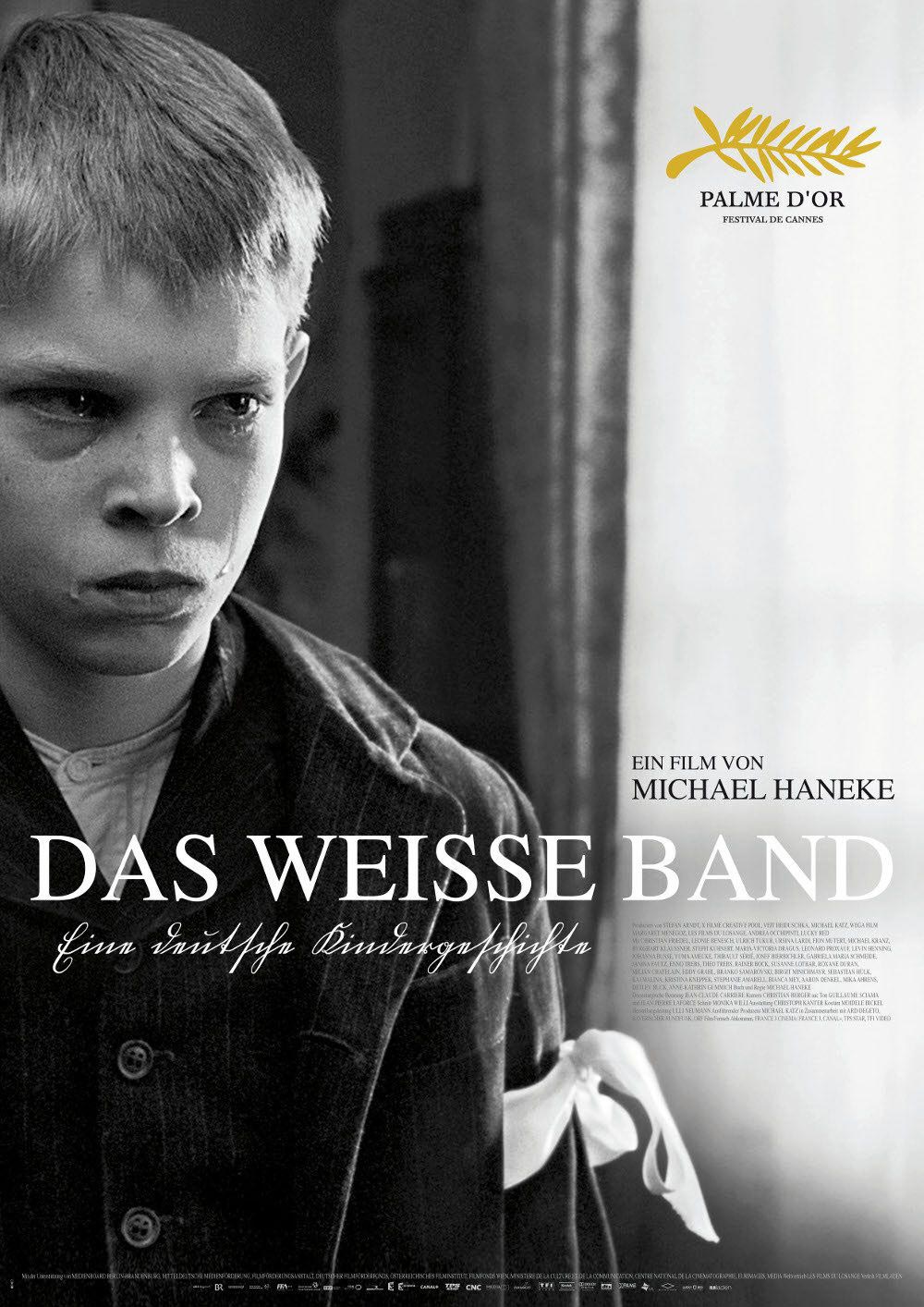 THE WHITE RIBBON (2008, directed by Michael Haneke, 144 minutes, Germany)
THE WHITE RIBBON (2008, directed by Michael Haneke, 144 minutes, Germany)
The school teacher’s narration at the opening of Michael Haneke’s high-art horror film The White Ribbon frames the story as a haunted memory. That perfectly describes how the winner last year’s Palme d’Or nestles in the memory a week after its viewing. The White Ribbon‘s deliberate rhythms and austere black and white images (courtesy of cinematographer Christian Berger) imprint themselves in the mind like a series of ancient daguerreotypes, evoking the fine arts while simultaneously resembling an Ingmar Bergman rebooting of the Children of the Corn franchise. The film’s (mostly off-screen) brutal action and the story’s submerged politics are effectively blunt, yet its mystery framework and its endless dazzling artistry allow the film to settle in at a deeper level than your standard highly-touted European fare.
Narrated by the town’s school teacher many years after the events, The White Ribbon takes us to what at first seems like a bucolic idyll in Northern German in 1913, the eve of WWI. The school teacher (Christian Friedel), a sweetly bumbling man in his early thirties, is acquainted with all the important citizens of the town, the factory steward, the pastor, the doctor and the baron on whose land they work, but he is naïve about their hidden lives. For the teacher the facts are unclear (“much is known only by hearsay” he admits in the opening) but we get to witness what goes on behind closed doors, where each of the town’s pillars rules their household with an unfeeling iron fist, or worse.
Much has been made of the film’s setting, as if the film had something specific to tell us about the character of the German people in the years before the rise of Nazism. Perhaps it has, but Haneke’s own description, that the film is about “the origin of every type of terrorism, be it of political or religious nature” rings most true. What starts off seeming like a random act of violence (the doctor horse is brought down by a metal trip-wire) sets off a series of violent events that begin to look more purposeful when we see the cruel abuses of power routinely doled out by this tiny feudal society. Haneke’s novelistic script gives us all the institutions of society: the baron who controls the village’s economy, the pastor who wields God’s sharp punishment, the factory steward whose carelessness endangers his workers and the doctor, who betrays those in his care most intimately. Only the school teacher acts with compassion, in heartbreakingly sweet scenes he courts a shy young nanny (Leonie Benesch), offering a brief respite from the building dread that grows by the discovery of each new mysterious atrocity.
Haneke carefully lays out his thesis of institutional cruelty planting the seeds of violence and if the film has a drawback it is the one-dimensionality he gives to the heartless men in power, each uniformly sadistic in their brutal interactions with their family. Still, the restrained performances of the film feel so authentic you never question the action as it unfolds; we’re kept in a spellbound state, mesmerized by the stark imagery -scythes, a bulbous cabbage patch, children praying – all transformed into something forbidding and dangerous. Despite its surfaces being so unlike Haneke’s other films, all his passions are here: the repressed characters, the barely-contained dread and the mystery that can never quite be solved. iAmong the most fully-realized of Haneke’s films, The White Ribbon is a mystery whose loose ends drive home the story’s provocative ideas better than a case-closed solution ever could.
